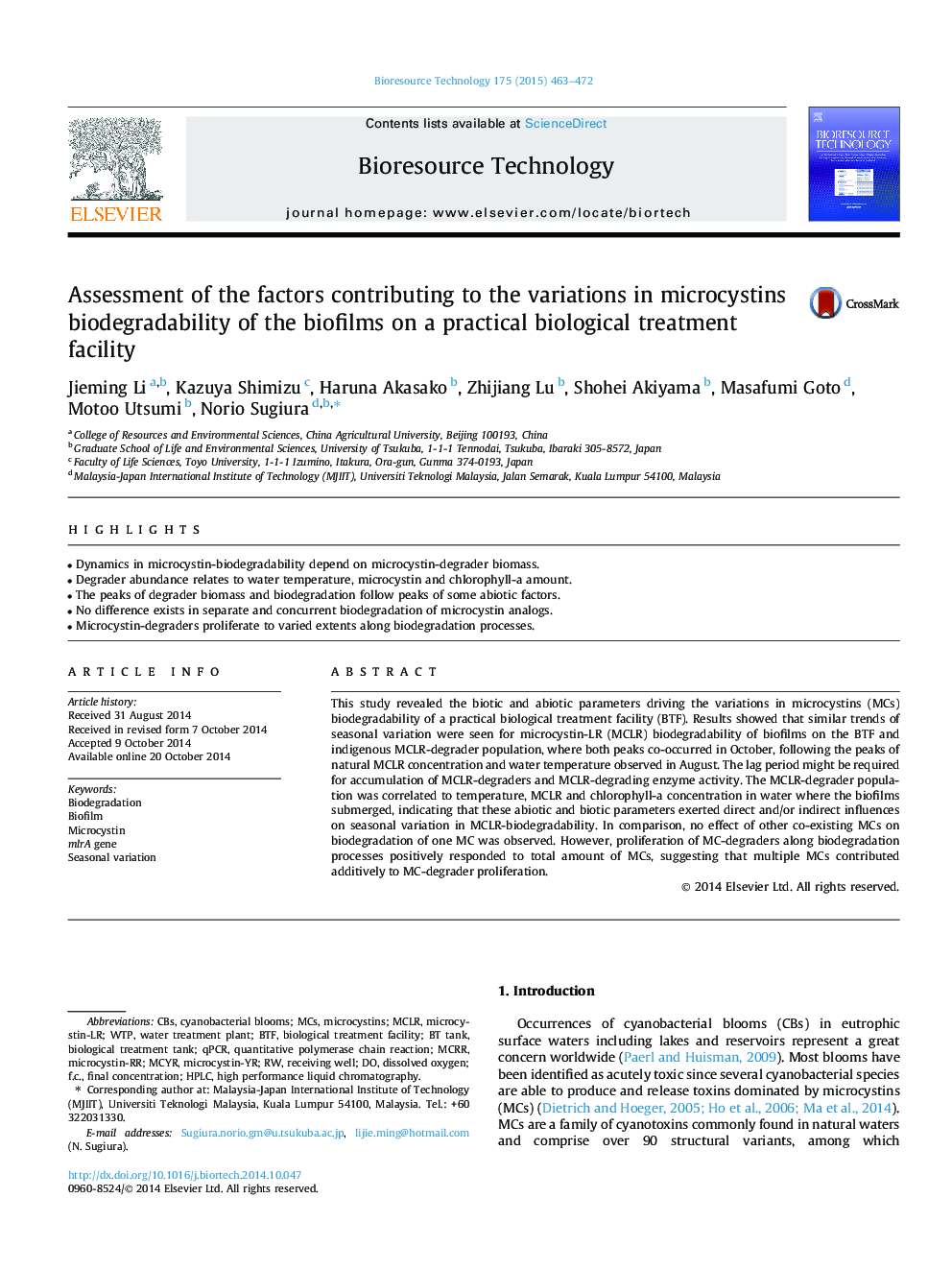| Article ID | Journal | Published Year | Pages | File Type |
|---|---|---|---|---|
| 680279 | Bioresource Technology | 2015 | 10 Pages |
Abstract
This study revealed the biotic and abiotic parameters driving the variations in microcystins (MCs) biodegradability of a practical biological treatment facility (BTF). Results showed that similar trends of seasonal variation were seen for microcystin-LR (MCLR) biodegradability of biofilms on the BTF and indigenous MCLR-degrader population, where both peaks co-occurred in October, following the peaks of natural MCLR concentration and water temperature observed in August. The lag period might be required for accumulation of MCLR-degraders and MCLR-degrading enzyme activity. The MCLR-degrader population was correlated to temperature, MCLR and chlorophyll-a concentration in water where the biofilms submerged, indicating that these abiotic and biotic parameters exerted direct and/or indirect influences on seasonal variation in MCLR-biodegradability. In comparison, no effect of other co-existing MCs on biodegradation of one MC was observed. However, proliferation of MC-degraders along biodegradation processes positively responded to total amount of MCs, suggesting that multiple MCs contributed additively to MC-degrader proliferation.
Keywords
Related Topics
Physical Sciences and Engineering
Chemical Engineering
Process Chemistry and Technology
Authors
Jieming Li, Kazuya Shimizu, Haruna Akasako, Zhijiang Lu, Shohei Akiyama, Masafumi Goto, Motoo Utsumi, Norio Sugiura,
